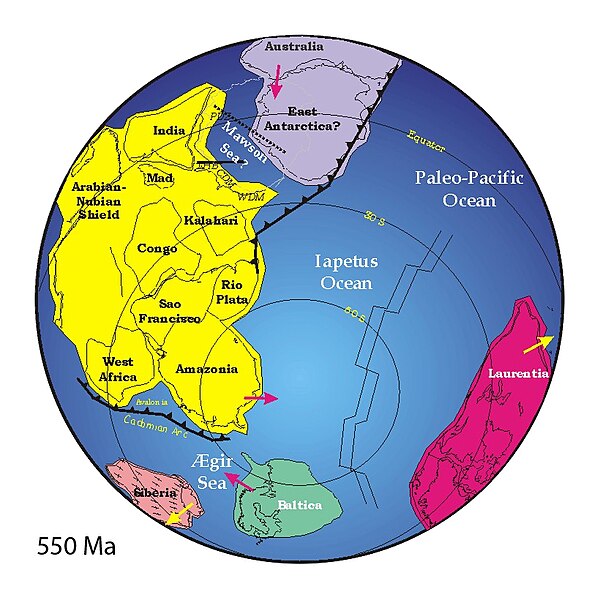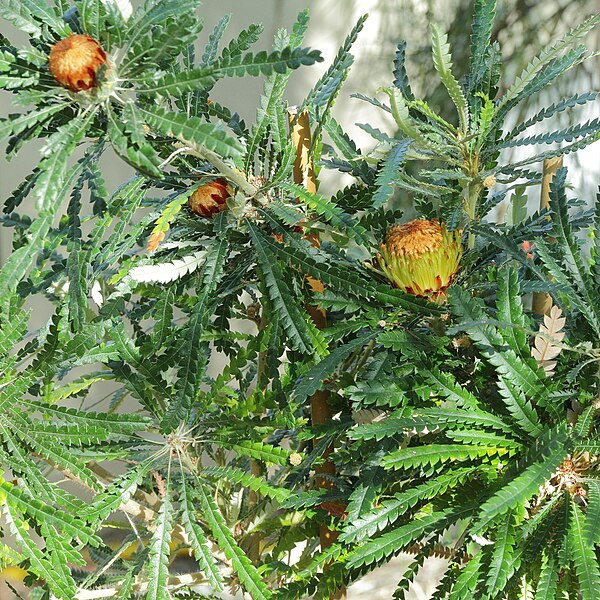Cimmeria was an ancient continent, or, rather, a string of microcontinents or terranes, that rifted from Gondwana in the Southern Hemisphere and was accreted to Eurasia in the Northern Hemisphere. It consisted of parts of present-day Turkey, Iran, Afghanistan, Pakistan, Tibet, China, Myanmar, Thailand, and Malaysia. Cimmeria rifted from the Gondwanan shores of the Paleo-Tethys Ocean during the Early Permian and as the Neo-Tethys Ocean opened behind it, during the Permian, the Paleo-Tethys closed in front of it. Because the different chunks of Cimmeria drifted northward at different rates, a Meso-Tethys Ocean formed between the different fragments during the Cisuralian. Cimmeria rifted off Gondwana from east to west, from Australia to the eastern Mediterranean.
It stretched across several latitudes and spanned a wide range of climatic zones.
Image: 237 Ma plate tectonic reconstruction
Gondwana was a large landmass, sometimes referred to as a supercontinent. The remnants of Gondwana make up around two-thirds of today's continental area, including South America, Africa, Antarctica, Australia, Zealandia, Arabia, and the Indian Subcontinent.
Reconstruction showing final stages of assembly of Gondwana, 550 Mya
Banksia, a grevilleoid Proteaceae, is an example of a plant from a family with a Gondwanan distribution
The plant genus Nothofagus provides a good example of a taxon with a Gondwanan distribution, having originated in the supercontinent and existing in present-day Australia, New Zealand, New Caledonia, and South America's Southern Cone. Fossils have also been found in Antarctica.
Image: Geology of Asia 450.Ma





